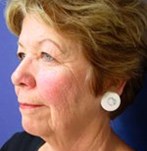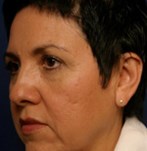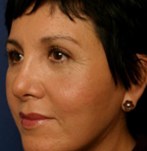The Deep Plane facelift is extremely suitable for men and women over the age of 55. The average age at Wellness Clinic is 59.
With a Deep Plane facelift, the deeper layers of your face are also treated. This technique is suitable for men and women who show significant signs of ageing and aim for a comprehensive rejuvenation of the entire face, for a fresher and more youthful appearance.
If you qualify for a Deep Plane facelift, you are likely to have a sagging neck and eyelids as well. Therefore, the procedure is often combined with a SMAS neck lift and correction of upper and lower eyelids.
The Deep Plane facelift is also known as the SMAS lift. SMAS stands for Superficial Muscular Aponeurotic System and points to the subcutaneous (SMAS) tissue that is lifted in this procedure. The surgical technique, under anaesthesia, is done in 4 steps.
Your Deep Plane SMAS Facelift in 4 steps
- The plastic surgeon places precise incisions, around the ear, in the hairline and sometimes under the chin. The scars are hidden in the natural folds of your face, so you hardly notice them later. The incisions give the surgeon access to the deep tissue layers, to restore them to your youthful appearance.
- The second stage is tissue separation. The surgeon creates space between the deep tissue layer, known as the Deep Plane and the SMAS (Superficial Musculo Aponeurotic System) tissue layer.
- Next, the repositioning of the deep layers in your face is done. The deep tissue layer (Deep Plane) and the SMAS are gently repositioned and tightened to rejuvenate your face.
- In the fourth stage, excess skin is removed, and the incisions are carefully closed with sutures
A Deep Plane facelift provides comprehensive rejuvenation
Ageing signs are significantly reduced and you enjoy radiance and rejuvenation throughout the face, for a super fresh look. You will enjoy permanent results for years.
Read more about Neck Lift






























































